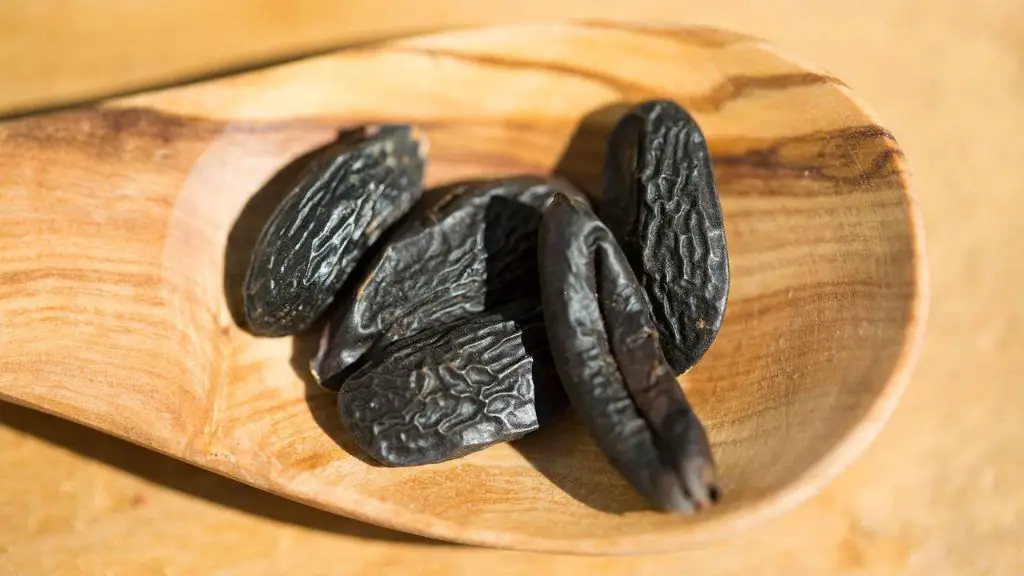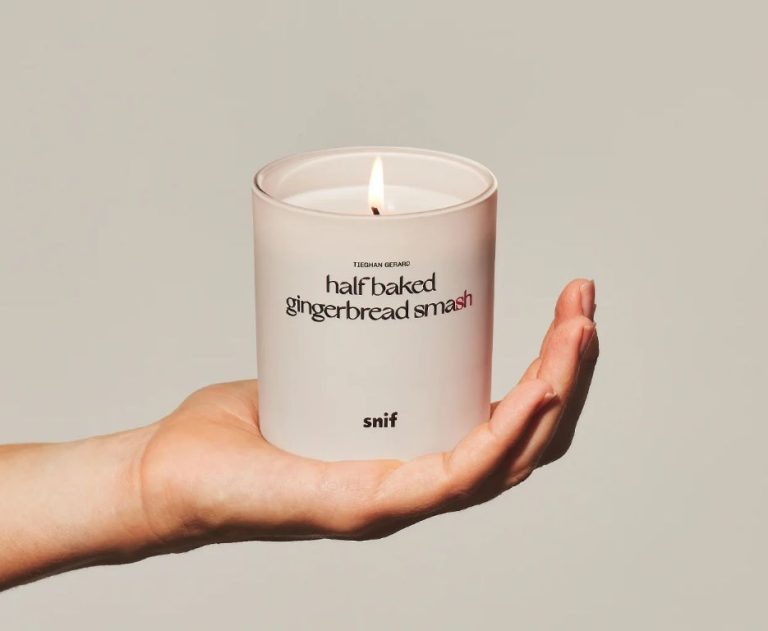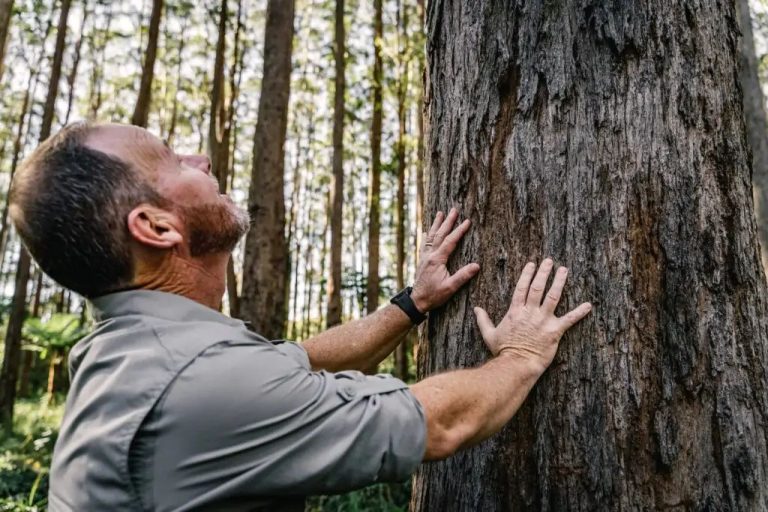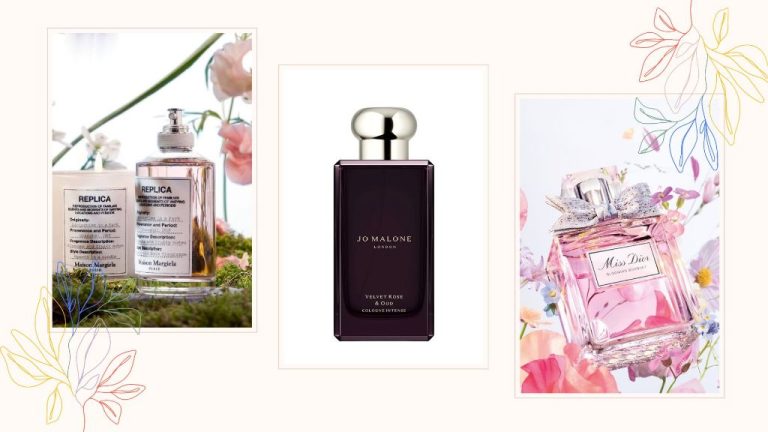Is Tonka The Same As Vanilla?
What is Tonka Bean?
Tonka beans are the seeds from a tree known scientifically as Dipteryx odorata. This tree is native to northern South America and is commonly found in Brazil, Venezuela, Colombia, Ecuador and Peru (https://en.wikipedia.org/wiki/Dipteryx_odorata).
The tonka bean tree grows up to 30 meters tall and produces large seed pods. Inside these pods are the tonka beans, which are almond-shaped seeds that are generally 1-3 centimeters long. When fresh, the beans have a fleshy, fruity pulp. As the beans dry, the pulp shrinks and turns black and wrinkly, leaving the inner tonka bean seed.
Tonka beans have a strong fragrance reminiscent of vanilla, caramel, cloves, and almonds. The beans contain coumarin, a chemical compound that gives them their distinctive vanilla-like aroma. Tonka beans are sometimes referred to as “vanilla beans on steroids” due to their intense vanilla-caramel fragrance.
What Does Tonka Bean Taste Like?
According to Sam B Vanilla, Tonka beans have a relatively complex flavor that is often described as a mixture of nuts and spices with notes of almonds, vanilla, cinnamon, clove, and honey (Source). The tonka bean has an aromatic, vanilla-like flavor, but it is more complex and intense than regular vanilla.
The Atlantic describes the tonka bean flavor as a vanilla caramel with dark honey notes when served cold, like in ice cream. When used in warm dishes, it imparts a sweet, spicy aroma with hints of clove, cinnamon, and almond (Source).
Overall, the tonka bean has a smooth vanilla/caramel flavor with aromatic woody and nutty undertones. It is rich, floral, and more complex than regular vanilla.
Tonka Bean Uses
Tonka beans have a lovely, distinctive aroma and flavor that makes them a popular ingredient in a variety of products. Here are some of the main uses of tonka beans:
Perfumes – The rich, vanilla-like fragrance of tonka beans makes them a sought after ingredient in fine perfumes. Tonka bean absolute, extracted from the beans, is used to add a sweet, balsamic note to perfume compositions (Food Network, 2022).
Soaps – Tonka bean’s scent lends itself well to handmade soaps. It is commonly used to create tonka bean-scented bath and beauty products.
Tobacco – The tonka bean is blended with tobacco leaves to flavor some pipe tobaccos, cigarettes, and cigars. It gives a sweet, aromatic quality to the tobacco.
Food and beverages – Tonka bean’s enticing vanilla-almond flavor leads it to be used sparingly in some foods like ice cream, pastries, candies, and liqueurs. However, the FDA has banned tonka beans as a food additive due to the presence of coumarin.
Potpourri – Dried, shredded tonka beans are added to potpourri mixtures for their long-lasting fragrance.
Aromatherapy – Tonka bean essential oil is used in aromatherapy for its relaxing, uplifting scent.
Is Tonka Bean Toxic?

Tonka beans contain a chemical called coumarin, which gives tonka beans their distinctive vanilla-like aroma and flavor. Coumarin is also found naturally in other plants like cinnamon, cloves, and cherries.
In very high doses, coumarin can be toxic to humans and animals. Eating as little as one tonka bean may be enough coumarin to reach toxic levels in children, while ten beans could be toxic for adults [1]. The toxicity of coumarin depends on the dose, species consuming it, and duration of exposure.
Coumarin works by thinning the blood, which at very high levels can cause internal bleeding and other complications. This is why raw tonka beans and foods containing tonka beans are banned for consumption in the United States and many other countries. However, coumarin also has medicinal benefits at lower non-toxic doses, including as a blood thinner medication.
While tonka beans are not safe to eat raw in large amounts due to their coumarin content, small culinary doses are not considered dangerous. Tonka bean extracts may also be safer due to lower coumarin levels. However, it’s best to exercise caution and enjoy tonka bean’s flavor sparingly.
Tonka vs Vanilla
Though they share some aromatic qualities, tonka beans and vanilla have distinct differences in flavor. Both tonka bean and vanilla are commonly used to add vanilla-like, sweet and creamy notes to foods, beverages and fragrances. However, tonka has a more intense, concentrated fragrance compared to vanilla.
The main aromatic compound in both tonka beans and vanilla is vanillin. However, tonka contains a higher vanillin content, which gives it a stronger, more pungent aroma. According to one analysis, tonka beans contain up to 4.4% vanillin, while vanilla contains only 1-2% (Source).
In addition to vanillin, tonka beans contain coumarin, which adds to its pleasant, sweet, balsamic aroma. Coumarin is found in much lower concentrations in vanilla. So while vanilla has a recognizable vanilla scent, tonka bean is often described as smelling like “vanilla on steroids” with more tobacco, hay and almond nuances (Source).
Due to its intense aroma and flavor, tonka requires a delicate hand. A little tonka can provide as much or more aroma than a larger amount of vanilla. When substituting tonka for vanilla, use about half the called-for amount of vanilla and adjust to taste.
Substituting Tonka for Vanilla
Tonka beans have a similar aroma and flavor profile to vanilla, which makes them a popular substitute in some parts of the world. However, according to The Pastry Sampler [1], tonka beans contain coumarin, which is banned by the FDA as a food additive in the United States. While small amounts of coumarin occur naturally in some foods like cinnamon, tonka beans have much higher concentrations.
If substituting tonka for vanilla, it’s important to use just a small amount of tonka bean in place of vanilla extract or vanilla beans. According to Reddit users on r/AskCulinary [2], the flavor of tonka beans is more concentrated than vanilla. Start by using 1/4 to 1/2 teaspoon of tonka bean for every teaspoon of vanilla called for in a recipe. Adjust to taste, keeping in mind that tonka has a stronger flavor than vanilla.
Take care when using tonka beans in baked goods, as overuse can impart a bitter, medicinal taste. When in doubt, opt for substitutes like vanilla extract or vanilla beans, which provide a similar aromatic vanilla note without the coumarin content.
Buying Tonka Beans
Tonka beans can be difficult to find in regular grocery stores, but they are available from some specialty food stores and online retailers. Some places where tonka beans can be purchased include:
– Specialty spice shops or gourmet food stores like Whole Foods – These stores may carry tonka beans in the spice aisle or with other baking ingredients. Always check for whole, intact tonka beans without any signs of damage.
– Online spice retailers like Amazon – Purchasing tonka beans online can provide more variety and bulk-ordering options. Reputable spice sellers on Amazon have various quantities available. Carefully read reviews and product details.
– International or Latin American food markets – Since tonka beans are commonly used in certain cuisines, ethnic food stores may stock them. Try looking in the section with vanilla beans or exotic spices.
When buying tonka beans, inspect them closely and avoid any with damage, mold, or holes. Select beans that are fragrant and plump. Also ensure the retailer properly stores and seals the beans to maintain freshness.
Storing Tonka Beans
Tonka beans should be stored properly to preserve their flavor and aroma. According to the Food Network, tonka beans should be kept in an airtight container away from light and heat [1]. Exposure to air, light, and warmth causes the essential oils in tonka beans to evaporate, resulting in loss of flavor. An airtight container prevents air exposure and keeps tonka beans fresh for 6 months up to a year.
Like vanilla beans and other spices, tonka beans should be stored in a cool, dark place like a pantry or cupboard. Avoid storing them near a stove, oven, or any source of heat that could cause the volatile aromatic compounds in tonka beans to degrade [1]. Keep them away from direct sunlight as well. Wrap tonka beans in plastic wrap or parchment paper before storing to protect them from light exposure.
With proper airtight and light-protected storage, tonka beans can retain their signature scent and flavor so they are ready to use when baking treats like tonka bean crème brûlée or infusing creams.
Tonka Bean Recipes
Tonka beans have a rich, vanilla-like flavor and aroma that makes them perfect for creating decadent desserts. Here are some delicious ways to use tonka beans in recipes:
Tonka Bean Crème Brûlée: For an indulgent twist on the classic French dessert, add grated tonka bean to the custard before baking for a lovely, exotic flavor. Garnish the finished crème brûlées with a caramelized sugar topping as usual (source: https://www.greatbritishchefs.com/recipes/tonka-bean-recipe).
Tonka Bean Panna Cotta: Infuse cream with a freshly grated tonka bean before using it to make a velvety smooth panna cotta. Chill in molds and serve with roasted fruit like strawberries or plums (source: https://www.littlesugarsnaps.com/tonka-bean-panna-cotta/).
Tonka Bean Ice Cream: To make homemade ice cream extra decadent, add grated tonka bean to your favorite ice cream base before churning. The tonka bean flavor pairs especially well with vanilla or caramel ice creams.
Tonka Bean Chocolate Truffles: Blend grated tonka bean into melted chocolate, then roll into balls and coat in cocoa powder to make unique truffles. The tonka bean adds a lovely floral note to the rich chocolate.
Tonka Bean Shortbread Cookies: For a twist on buttery shortbread, add a grated tonka bean to the dough. Bake as usual and sprinkle the cookies with powdered sugar.
Tonka Bean Legality
Tonka beans are banned as a food additive in the United States by the Food and Drug Administration (FDA) due to the presence of the toxin coumarin, but they remain legal in some other parts of the world. According to the FDA, foods containing tonka beans are considered “adulterated” under the Federal Food, Drug, and Cosmetic Act.
The ban dates back to 1954, when the FDA prohibited the use of tonka beans after studies showed that coumarin had adverse health effects in animals. While coumarin does occur naturally in certain plants, tonka beans contain significantly higher levels of the toxin.
In Europe, tonka beans can still be purchased and consumed, though the European Union limits the amount of coumarin allowed in food to protect consumers. The EU has set the maximum coumarin content at 2 milligrams per kilogram of food. So tonka bean products in Europe have regulated levels of the beans to comply with safety standards.
Despite the ban, tonka beans are still prized by some chefs and perfumers for their uniquely sweet, vanilla-like fragrance. However, any foods or perfumes containing tonka beans cannot be sold legally in the U.S. The aromatic properties come from the same coumarin that makes tonka potentially toxic.
So while much of the world can enjoy tonka bean’s one-of-a-kind flavor, they remain prohibited in American foods and scents. The FDA ban aims to protect consumers from possible health risks linked to coumarin exposure from excessive tonka bean consumption.
(Sources: https://www.mashed.com/675254/the-real-reason-tonka-beans-are-illegal-in-the-us/, https://tastecooking.com/banning-food-makes-sweeter/)





